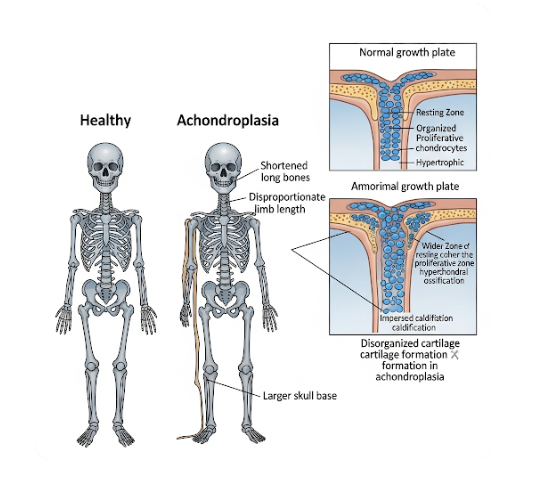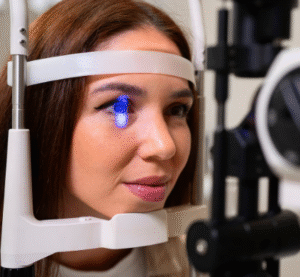Dwarfism in Korea
Overview
Dwarfism refers to a medical condition characterized by short stature resulting from genetic or medical causes. In South Korea, dwarfism is recognized in both children and adults, with various genetic syndromes and growth disorders contributing to its occurrence. Early diagnosis and intervention help optimize growth potential and improve quality of life.
What is Dwarfism?
Dwarfism is defined as an adult height of 4 feet 10 inches (147 cm) or shorter due to medical or genetic conditions. It may be classified as:
- Proportionate dwarfism: Short stature with normal body proportions, often due to hormonal or metabolic disorders
- Disproportionate dwarfism: Short limbs or trunk compared to other body parts, usually caused by skeletal dysplasias like achondroplasia
Symptoms
Common signs and symptoms include:
- Short stature compared to peers
- Disproportionate body parts (limb or trunk differences)
- Delayed growth and development
- Skeletal abnormalities (bowed legs, spinal curvature)
- Joint pain or limited mobility in some types
- Facial features may be distinct in certain syndromes
Causes
Dwarfism can result from:
- Genetic mutations affecting bone growth (e.g., achondroplasia, hypochondroplasia)
- Growth hormone deficiency or pituitary disorders
- Chronic illnesses affecting nutrition or development
- Skeletal dysplasias impacting bone formation
Risk Factors
Factors that increase the likelihood include:
- Family history of genetic dwarfism
- Genetic mutations in specific growth-related genes
- Hormonal or endocrine disorders in childhood
- Maternal or early-life nutritional deficiencies
Complications
Potential complications of dwarfism may include:
- Skeletal deformities, such as scoliosis or kyphosis
- Joint problems and early arthritis
- Respiratory issues in certain syndromes
- Psychological or social challenges due to short stature
- Reduced mobility and physical activity limitations
Prevention
Since most forms of dwarfism are genetic, prevention is limited, but early interventions include:
- Prenatal genetic counseling for families with a history of dwarfism
- Early diagnosis and treatment of growth hormone deficiencies
- Monitoring and managing chronic health conditions affecting growth
Treatment Options in Korea
Management in South Korea focuses on medical, surgical, and supportive care:
Medical Management:
- Growth hormone therapy for hormone-deficient children
- Nutritional support and monitoring of developmental milestones
Surgical Intervention:
- Orthopedic surgery for skeletal deformities
- Limb-lengthening procedures in select cases
Supportive Care:
- Physical therapy to improve mobility and joint function
- Psychological counseling to address social and emotional challenges
- Assistive devices to enhance daily living
Specialized Care:
- Pediatric endocrinology and orthopedic departments in Korean hospitals provide comprehensive diagnosis and treatment
- Multidisciplinary clinics coordinate care for long-term growth, mobility, and overall well-being
With early recognition, medical therapy, and surgical options in Korea, individuals with dwarfism can lead active, fulfilling lives while managing physical and developmental challenges.













